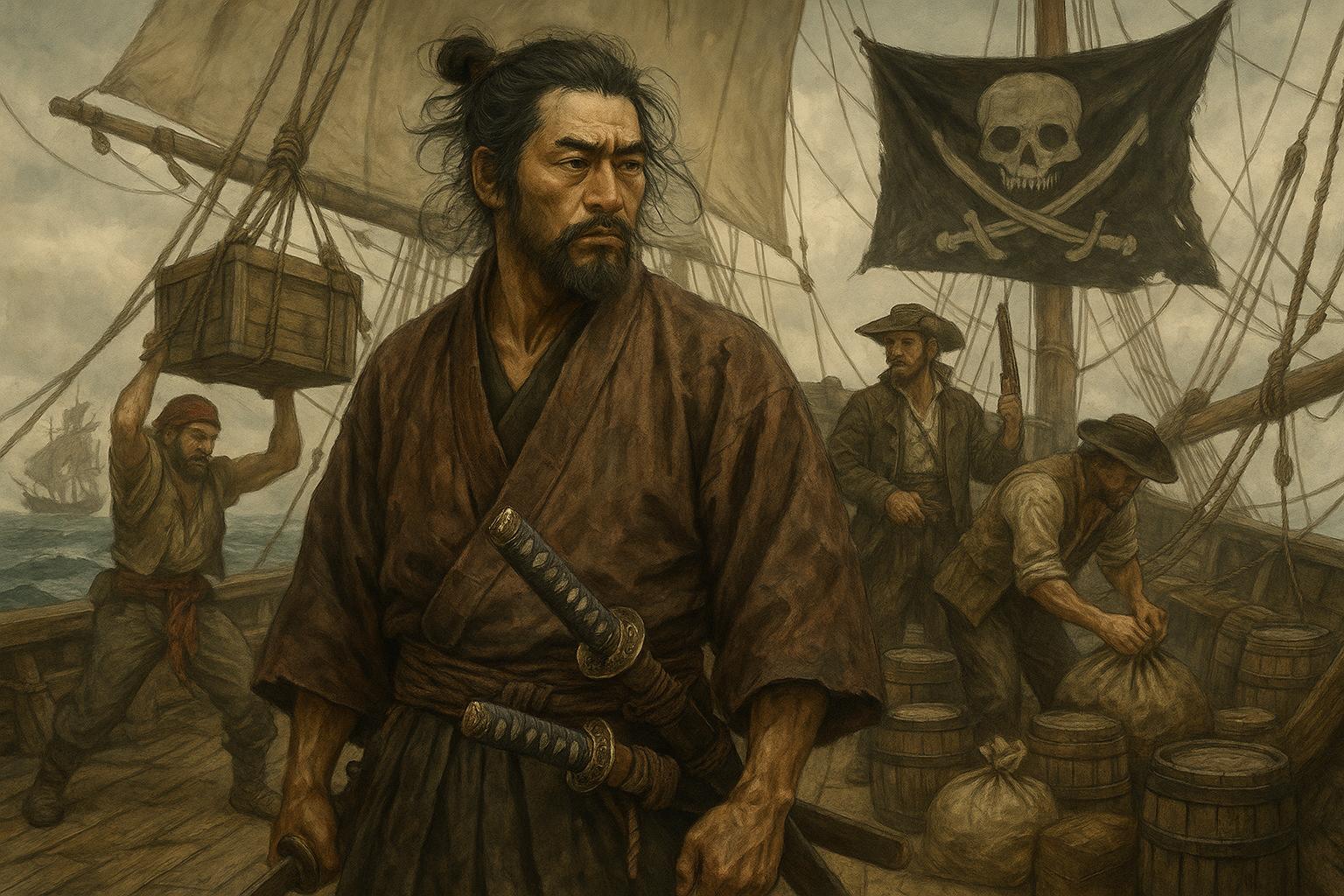The Origins and Evolution of Ronins
The term ronin has deep historical roots in Japan’s feudal period, referring specifically to samurais who found themselves without a master due to various reasons, such as the death of their lord or disbandment of their clan. During the most notable period of their emergence, the Edo period, many of these masterless warriors roamed the countryside or settled in bustling urban centers in search of new opportunities. As they operated without the structured leadership and responsibilities that bound the regular samurai class, ronins enjoyed a degree of freedom that allowed them to engage in a wide range of activities, including those beyond the traditional powerful and noble imagery associated with samurais.
The Shift to Smuggling and Piracy
The socio-political climate of Japan during different historical periods, characterized by instability and economic challenges, inadvertently set the stage for some ronins to delve into activities like smuggling and piracy. With strict trade regulations often in place to control interactions with the West and neighboring nations, clandestine trading networks emerged, creating opportunities for individuals skilled in martial arts and familiar with Japan’s landscapes. These ronins, leveraging their combat proficiency and keen knowledge of terrain, found a niche in these activities, occupying roles that were essential yet often veiled in secrecy.
Smuggling Operations
The involvement of ronins in smuggling operations became particularly pronounced during Japan’s era of isolation under the Tokugawa shogunate. At this time, they took part in illegal trade activities designed to bypass the restrictive trade policies of the period. Ronins contributed to the illegal movement of commodities, including weapons, silk, and various foreign luxuries, surreptitiously catering to the demand for such goods within and beyond Japanese borders. Positioned along the coasts, they applied their strategic acumen and combat skills to defend these shipments against intrusive authorities and rival bands, solidifying their standing in the underworld of illicit trade.
Piracy Endeavors
Piracy emerged as another lucrative but perilous venture that attracted ronins, allowing them not only to earn a livelihood but also to retain the vestiges of the warrior ethos characterizing the samurai lifestyle. Through engaging in piracy, many ronins became integral members of extensive pirate bands or held leadership roles over smaller factions, executing raids across critical maritime pathways such as the Seto Inland Sea. This turn to piracy was driven by more than mere survival instincts; at times, their actions aligned with political motives. Certain regional lords clandestinely supported them, seeing the potential to undermine adversaries by disrupting their economic activities.
Impact on Regional Trade
The influence of ronin-led smuggling and piracy endeavors extended to the broader landscape of regional trade, introducing significant changes and challenges. These activities resulted in disruptions within the official trade channels, intensifying competition through the introduction of cheaper or even completely banned goods. This, in turn, placed pressure on local economies and governing authorities. Moreover, the continuous threat presented by ronin bandits and pirate factions necessitated the implementation of heightened security measures along trade routes, consequently impacting both the cost and efficiency of trade operations.
Legacy and Cultural Representation
In contemporary times, the legacy of ronins, alongside their ventures in smuggling and piracy, is vividly reflected and, at times, romanticized in popular culture. Such portrayals highlight the intricate and multifaceted socio-economic backdrop of Japan’s historical narrative. Popular films, literature, and art have consistently depicted ronins, illustrating their transformation from principled warriors to marginalized outlaws. This duality in representation underscores the dynamic shifts within Japanese society as it encountered the pressures of modernization and external influences, thereby contributing to a nuanced understanding of ronins beyond their legendary status.
For more informative content related to the samurai class and its rich history, you may wish to explore historical archives or consult academic articles dedicated to Japanese history, where detailed accounts and analyses provide a deeper exploration into the rise and evolution of the samurai and its associated entities, such as the ronins.
Furthermore, the socio-economic role of ronins during Japan’s transitional periods showcases the broader theme of adaptation and resilience. As Japan evolved from a closed society to one more attuned to the global stage, these masterless warriors reflected both the challenges and opportunities of their times. Their activities, whether through illicit means or attempts to align with new masters, signified a broader survival strategy amidst shifting political landscapes and societal disruptions.
As scholars continue to delve into the intricate tapestry of Japan’s historical past, the story of the ronins remains a captivating subject, illustrating a phase of adaptation, conflict, and cultural integration. Though often associated with illicit undertakings, their narrative underscores larger themes of identity and the pursuit of purpose in a rapidly changing world. Whether cast in the light of honor or infamy, the ronins remain an indelible part of Japan’s rich historical tapestry. Their legacy, steeped in both historical fact and cultural lore, continues to intrigue and inspire those not only in Japan but around the world, highlighting the enduring allure of the samurai spirit in its many forms.

